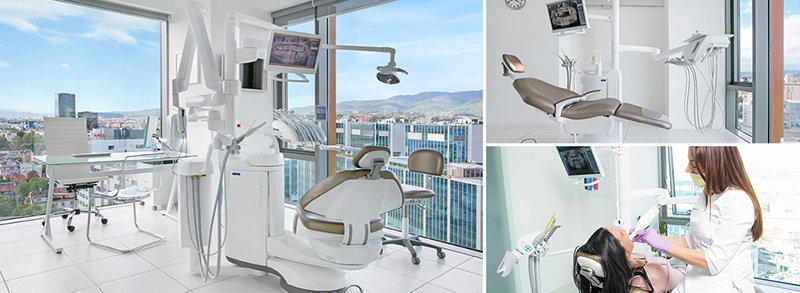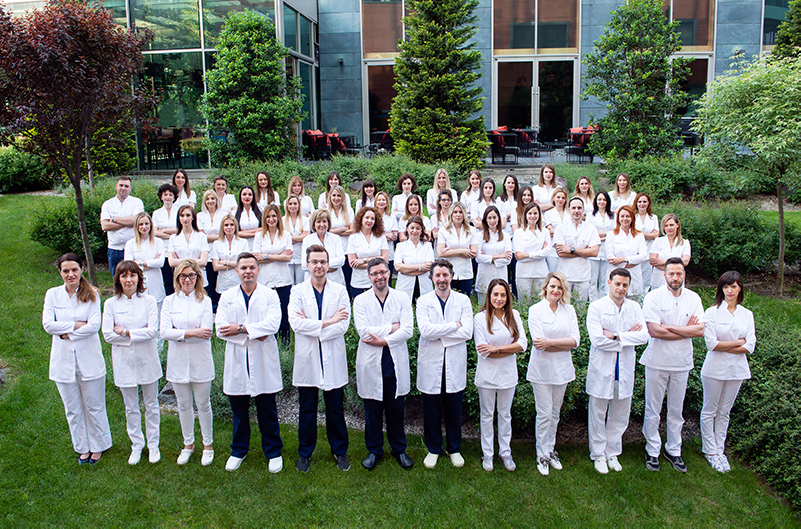Supporting Patients and Employees with Expanded Collaborative Tools
Cisco
It happened several months ago, but I remember the events unfolding like it was yesterday.
On February 25, the first COVID-19 case hit Croatia. In the weeks prior, our leadership team had begun discussing our “worst case scenario” as we witnessed Italy’s downward spiral. Our clinic on the Adriatic coast didn’t know how to handle our Italian patients, and now the virus was officially here.
On March 1, I was in Orlando, Florida, planning the European Patient Experience & Innovation Congress (EPIC), the biggest congress we’ve ever organized. Then on March 8, we had to postpone the congress.
By March 12, it was clear that lockdown was inevitable. Our leadership team discussed making the “worst-case scenario” plans a reality. On March 21, Croatia was closed—and to cap it all off, a huge earthquake struck the capital of Zagreb on March 22.
It was a scary time to be running a business, even a well-recognized, internationally renowned one.
We are the Bagatin Clinic. Continuing 25 years of tradition as a family business, we lead the industry in aesthetic surgery, dermatology, dentistry, and cosmetology. We’re known for our expertise not just in Croatia but abroad: with clients from 85 countries around the world, we contribute to Croatia’s medical tourism business.

My two brothers, who are both plastic surgeons, and I had a vision of becoming one of the best clinics in Europe, and we’ve achieved that with a lot of enthusiasm and a lot of effort. When I joined the business as CEO in 2008, we had only €30,000 of revenue. Today, it’s €6.5 million.
Our greatest success, however, is the way we make people feel. We pride ourselves in providing a wonderful experience to our employees as well as our patients. It’s about more than just medical results; it’s about building trust throughout each patient’s journey.
First Steps Toward Collaboration
Most of our collaboration before March 2020 was done in person. Sometimes, we would use Skype or another digital solution upon request, but we would never initiate that kind of remote connection. Skype in particular was problematic because it’s not a secure way to communicate.
Admittedly, only meeting in-person was a very old-fashioned way of doing things, even as we use plenty of cutting-edge medical technologies. And even though our collaboration style worked pretty well, we knew we wanted to expand our options for telehealth to better serve our large international client base.
Because we work with medical data, though, that is easier said than done. First, we worked on our medical CRM solution for two years. This was a necessary first step before we could embark on any other digital transformation. Last year, we upgraded our infrastructure, setting the stage for the telehealth expansion.
If you had asked me at the beginning of the year where we were with this project, I would say we had just begun. Little did I know how far we’d come over the next few months.
At the time, we were busy organizing our EPIC congress with the Cleveland Clinic. During the planning process, I had the opportunity to visit Cisco’s headquarters in California in 2019. When I did, I saw the opportunity to improve healthcare and patient experience through technology, and so they became our technology partner for that event.
Fast forward to March. It became painfully obvious that not only would we have to postpone the congress, but that we would have to close our clinic due to the pandemic. That raised another set of issues around our own business and how we could weather the storm. Because I had developed a relationship with Cisco, I reached out to them and asked what solutions could help us through this challenge.
Cisco suggested Webex for virtual meetings, which integrated with our medical CRM. When we tried it, we loved it, and once we started using it, there was no going back.
Supporting Patients and Staff
There’s nothing like necessity to speed up technology implementation. Pre-pandemic, if I had asked our practitioners to adopt a new technology, it would have taken several months and some hand holding from IT for that to happen. When the lockdown started, though, we needed a way to stay connected with each other and with our patients. Because of that, we had to adapt very quickly. Webex was our way forward, and it was so easy to use that our staff had no trouble learning the ropes.
With Webex, our leadership team of 20 people continued with our planning meetings where we responded to the pandemic situation as it changed daily. We also held all-staff meetings to keep all employees up to date on our pandemic response.
It was incredibly stressful; people were worried about their jobs, and we wanted to be as transparent as possible about the situation. Webex made it possible for us to securely host these sensitive sessions for around 125 people, and reassure them as much as we could that we would make it through this.
During this time, we also continued our professional development programs for employees. Usually, we hold these sessions in person at our clinic. But we were able to host soft-skills education classes with more than 50 coaches using Webex.
We also informed our clients of our Webex adoption, and sent them a link so that they could continue communicating with us. Our call center was very active and responsive in addressing patient questions and concerns. Currently, clients make appointments through our call center, and are sent invitations for those appointments via Webex Meetings. Our clinic is all about the patient experience, and finding a way to enhance that this was our way of saying, “We’re always here for you.”
Our patients responded to the new technology just as well as our staff. During the six-week period the clinic was closed, we held more than 100 online consultations. This constant business helped us stay motivated, and we hit the ground running when offices finally reopened on May 4.
All of our activity in April and May was focused on maintaining our business. In addition to reassuring our staff, we wanted to show our patients the precautions we were taking and how they would be physically safe in our care. Our online consultations also proved to be another opportunity to build trust with our clients. Using a reliable and secure platform for such sensitive consultations showed them that we take their privacy and security seriously. This deepened the client-provider relationship.

By June, we realized that we were still sitting on a database of 14,000 people who were interested in the EPIC congress. We wanted to keep those lines of communication open and maintain that interest. We contacted Cisco about hosting webinars, and their solution, Webex Events, turned out to be a natural progression from what we had already done. We signed up and quickly organized six webinars, each led by a leading expert in their respective field. These proved to be really popular, with hundreds of people applying to attend.
We continue to plan these webinars, which provide our contacts with opportunities to engage with each other and industry leaders on important topics. These topics cover everything from new ways to address patient needs to how technology can support these efforts. It’s an extra value add that we can provide to our database.
Seeing the Light
Cisco opened our eyes to a whole new way to communicate. We were slow to adopt a virtual platform, but are now making up for lost time by implementing digital transformations into every one of our processes. After working on our CRM, we saw how easily we could integrate Webex with other aspects of our business, and it opened the door to further digitization. First it was telehealth, now it’s chatbots, digital signatures, and an app to make it easier for patients to access medical records.
The digital signature in particular will save us a lot of time. Every time a patient fills in forms and signs documents, it takes staff members another 30 minutes to put that information into our CRM. When this happens dozens of times every day, that results in a lot of wasted time. The time saved with the digital signature is going to allow us to focus more on our interpersonal interactions with patients, therefore providing a better experience to our clients.
We Croats are Mediterranean to the core; we have a culture of always wanting to meet face to face over a cup of coffee. But we have learned that sometimes, camaraderie can be achieved just by seeing someone’s face. And that can be done with Webex.
We used to spend two hours in meetings. Today, it’s 30 minutes to an hour, and you’re out of there. There’s no extra chit-chat, and we’re more focused and more direct. That may sound impersonal, but you’d be wrong. I now have more meetings and connect with more people in a day online than I ever could in person. That efficiency means that leadership is more productive overall. And that results in better service between our team and our patients.
There’s no going back to where we were before. Initially, the pandemic lockdown wounded us. Now, though, we have opened our eyes to all the possibilities that go along with integrating technology into our business. I know we will emerge a better, more productive, more efficient, and more profitable company than before. And that, in turn, will help us provide better patient care in the future.







